We asked several HIT vendor executives the following question: Where do you plan to invest your research and development dollars over the next 1-2 years?

Tim Elliott, Founder and CEO, Access
We are focusing on three technologies that every hospital needs: electronic signature, a data bridge between clinical devices and systems and EHRs, and paperless, online e-forms.
The next generation of e-signature not only enables patients to quickly and securely authorize e-form registration packets and bedside consents, but also offers administrators the convenience of a server-based model. A clinical data bridge can capture and standardize output from devices (such as EKG traces and surgery images) and systems (perinatal documentation, COLD feeds, etc), and interface these directly into EHRs – with no paper or manual indexing.
Finally, we’re giving hospitals a way to transform slow, inefficient paper-based processes – such as onboarding, capital requests and physician referrals – into fast, collaborative, paperless ones. Users will be able to access electronic forms from their browser, add attachments, apply digital signatures and send through the proper channels, and to track each stage of the process. Upon completion, a copy of the form is archived in the ECM system and data posted to business and/or clinical systems. With healthcare facilities shooting for full EMRs, we’re doing our part to create technologies that fill the gaps, and are focusing our R&D on removing paper from as many processes as possible.

Ray Dyer, CEO, Acusis
As a clinical documentation solution provider, we continue to look to our customers and healthcare IT market drivers. Given the many transformations underway, driven to a large degree by healthcare provider behavior, we are planning on investing our R&D funding in user intelligence tools including decision support and patient care analytics as well as mobile solutions development. We believe these areas will continue to be driven by customer need and demand, requiring data availability with strong privacy and security provisions. Acusis is poised and preparing to meet these challenges.

Dan Herman, Founder and Managing Principal, Aspen Advisors
Aspen Advisors’ investments will be focused on the expansion of our current services to address the needs of our clients:
- Adoption of EMR technologies and clinical informatics;
- Healthcare reform in support of “accountable care” delivery and financing models;
- Operational integration of Business Intelligence and Data Warehousing solutions to enhance care delivery, improve quality, reduce costs; and
- Improved reliability and cost effectiveness of technology infrastructure through the implementation of structured IT service management processes.
We will continue to invest in the development of structured, repeatable, yet flexible methodologies for planning and assessment, implementation management, and operational performance improvement.
We will also continue our investment in training programs for our consultants, so that our clients will continue to see the consistent application of expertise and delivery of service as our firm continues to grow.

Don Graham, General Manager, Billian’s HealthDATA
Our R&D investment will focus primarily on improving our data on outpatient care, and the better use of social media internally to communicate who we are and what we have.
With outpatient surgical visits now accounting for almost two-thirds of all surgical visits in the US, it is an area that our customers – healthcare vendors – are paying more and more attention to. We in turn must provide them with the data they need to best address this trend, which doesn’t show any sign of slowing down in my opinion.
As for social media, it’s proving to be the most effective way to distribute the news. That includes, of course, healthcare news. We realize that our customers and their provider customers are increasingly using social media as a means of communication and self-education, not to mention public relations and marketing. Patient referrals, good and bad, will have an ever-increasing influence on healthcare-related decisions made by the public, and the public’s migration to social media is obvious.
We, of course, want to be where our customers are, whether that be Twitter, LinkedIn, or blogs like HIStalk, so we’ll be ramping up our social media presence internally to make sure that staff are engaged and conversant in the healthcare discussions taking place online.

Stuart Long, President, Capsule
As the leaders in device integration, we’ve always been in the data business. Yet data needs are rapidly evolving. We are going well beyond the basic connectivity of data into information system(s). Basic connectivity is actually well understood as a necessity at this point; hospitals get that automating the vitals collection process is critical to recovering nursing hours, reducing charting hours and improving patient care. What they really need is better, more useful data to help improve decision making, to alert them to impending conditions faster and to improve the quality and safety of patient care overall.
We’ve reached a tipping point; hospitals are starting to scream “information overload.” Our customers are saying “we get so much data, from so many sources, that we need help sorting through it all; we need it presented in a meaningful way so we can act upon it faster.” We hear them loud and clear and will therefore be investing heavily on data; on how we increase the value of data so we can manage and disseminate the discrete data and communicate additional relevant context and meaning of that data to the right caregiver, at the right time, about the right patient. It’s a tall order and will take a lot of work with our EMR partners as well to make it a reality, but I think we are in the right place, at the right time to make it all happen.

Mac McMillan, CEO, CynergisTek
That’s easy — on the areas of privacy and security representing the greatest challenges for our customers.
We have always prided ourselves on staying out ahead and anticipating the needs of the industry and the needs of our customers in privacy and security. Five years ago, that meant attacking things like data leakage, encryption, and log management/auditing. Today it still involves finding better ways to monitor activity in the enterprise, but it also includes things like securing the cloud, defining managed security services for healthcare, managing the risk associated with the proliferation of mobile devices and medical devices that are not secure, and finding ways to better manage the security requirements with Business Associates.
Healthcare has enough complexity in its environment and more than enough on its plate with HIE, ACO, ICD-10, etc. It needs practical security strategies and solutions that work and are effective at stemming the tide of breaches like we have seen this year. We believe that in order for healthcare to win the battle with privacy and security, it’s going to take an investment in the right technologies and integration of Managed Security Services into compliance programs. We understand that technology alone is not the answer, and so the focus should be on implementation strategies and building the right processes around these technologies that enable them to be successful.

Michael O’Neil, CEO, GetWellNetwork
In recognition of the emerging reality that healthcare will be delivered anywhere and everywhere, no matter what the time, device or location, GetWellNetwork will sustain its investment in innovative Web-based, mobile phone and cable television technologies. When used properly, such technologies will support communication, education and even engagement throughout a patient’s care journey — from the home to the physician office, hospital, imaging center, or pharmacy and back to the home once again.
Platform-agnostic, technology-enabled patient engagement will be indispensable to providers, payers, and vendors as they work collaboratively to reduce hospital readmissions, promote self-care, boost patient and member satisfaction, and decrease cost per case. At GetWellNetwork, we are making significant investment in helping providers fulfill Stage 2 and 3 Meaningful Use requirements, and address the evolving challenges of medical home, accountable care and bundled payments.

Peter J. Butler, President and CEO, Hayes Management Consulting
At Hayes, we plan to invest R&D dollars in our hospital billing compliance software, MDaudit Hospital. It is designed to give auditors access to billing data to support revenue integrity, helping them to eliminate the errors for which CMS routinely recovers payments through its integrity programs such as RAC, MAC, and the efforts of the OIG.
However, we are finding that our clients are increasingly asking us about using this tool for other strategic projects such as ICD-10 documentation improvement, Meaningful Use, and data mining. Therefore, we are exploring related tools to use for these additional purposes. For example, via our recent integration with MediRegs clients can look up diagnosis and procedure codes and documentation requirements while in MDaudit. Additionally, some of our auditors are using MDaudit as a physician training tool on ICD-10 documentation.

Tiffany Crenshaw, President and CEO, Intellect Resources
Intellect Resources is investing in identifying and breeding new talent for the healthcare IT industry, with emphasis on training and go-lives. In 2011 we debuted Big Break, a high-energy recruiting event designed to select an entire training and go-live teams in short period of time. Big Break is marketed towards individuals with no or minimal healthcare IT experience who have the right attitude, enthusiasm, and potential. In an intensive one-day recruiting event, job applicants must complete a series of rigorous tests – one-on-one and panel interviews, extemporaneous public speaking, group work and classroom presentation skills – designed to identify only the best training and go-live talent.
Once selected, Big Breakers complete an intensive course with classroom and hands-on learning, credentialing them in the appropriate EMR. As a result, a hospital system is able to select an entire training and go-live team in just a few days. Because Big Breakers do not typically have prior industry experience, they can often be secured at a fraction of the cost. As a result, hospital systems are able to breed and retain this new talent at a fraction of industry costs in a short amount of time.

Doug Burgum, President and CEO, Intelligent InSites
In our pursuit of improving care while lowering costs, we’ll be investing in three primary areas in the next 1-2 years.
First, one of Intelligent InSites’ most important objectives is to improve caregivers’ ability to spend more time at the patient bedside. To this end, we’ll be continuing our R&D investment in automating non-value-added manual tasks—including EHR data entry and finding available, clean equipment through easy-to-use applications—to give caregivers more time to spend with patients.
Second, as our solution utilizes RTLS and RFID technologies to know the location, status, condition, and interaction of all tracked equipment, patients, and staff throughout the hospital, we collect a massive quantity of operational data, every minute, every day, month after month, year after year. Through our Business Intelligence solution, we help our customers harness this “Big Data” to produce actionable insights critical to making sound and timely decisions, by utilizing flexible, high-impact, easy to create reports.
Third, because real-time data is generated from a wide variety of data sources, and because real-time intelligence can empower multiple healthcare IT systems, we’ll be continuing our investment in our partner ecosystem. We will continue to integrate with the expanding set of RTLS hardware vendors, and we’ll continue to expand our interfaces with EHR solutions, communications platforms, asset management applications, building management systems, and nurse call systems.
We are excited about investing in the future of RTLS, the “magic” of enterprise RTLS software, and helping our customers to truly improve the care they deliver, while simultaneously lowering their costs.

Tom Carson, CEO and President, MD-IT
MD-IT has traditionally developed and delivered software functions that provide or support practical use of technology for physicians and patients, and that will continue to be our focus. Like most vendors, we will keep an eye on Meaningful Use requirements and other market developments, but identifying specific features beyond the near term is tough, as the HIT market is quite volatile at this point.
We expect to see evolving demands as the industry moves from what we think of as effectively an EMR version 1.0 environment to a more mature EMR version 2.0 environment that is more sensitive to the needs of physicians and patients as the primary users of these systems. Certainly near-term efforts will be directed to expansion of our popular mobile functionality that streamlines physician workflows, as well as continued broadening of our interoperability functions that link providers, patients, and payors.

Patrick Hampson, Chairman and CEO, MED3OOO
We are focusing our investments and resources in numerous areas. MED3OOO has committed to focus our knowledge, products and services with a MED360 view of healthcare delivery. We are not like most vendors just supplying systems. Our investments will continue to expand our current operational and technical capabilities and offerings. We will continue to integrate our proprietary systems, and continue our investments in capturing and using data of populations. We will continue to invest in tools that providing information across the entire spectrum of care focused on: efficiencies wherever we can find them, the patient and provider experience, the cost and most importantly the quality of care delivery. We want to be the best partner to providers that is in the industry.
Our investments in point-of-care capabilities will also create a great differentiation for the providers using our proprietary systems. As part of this, we are investing in the area of clinical decision support. “CDS” in an Electronic Health Record can take many forms. It is certainly more than providing guidelines to a provider. We want to focus on the user experience and want to spend a lot of effort with physicians reviewing workflows to determine how CDS can truly add value to the provider and patient when care is being delivered. Our addition of Quippe is just one example of these efforts. Quippe is the state-of-the-art documentation tool in the industry and is the basis of enhanced CDS within our InteGreat EHR offering.
These efforts are also critical to the physicians and hospitals we have partnerships with, but who are on older technologies or legacy systems even though they come from today’s brand vendors. Physicians already have investments in these systems. They too, need these higher level capabilities and they too need knowledge-based solutions. While these systems may be older and not web- based, MED3OOO, as their operating partners we work to provide solutions to improve on the capabilities these older systems just do not have. A system agnostic approach allows us to not just throw them out and waste physician’s precious capital. We try to maintain those systems and it is somewhat like the BASF commercials, “We don’t make things, we make things better.”
Lastly we will continue to expand our significant M3IQ data warehousing capabilities, capturing data from disparate systems, continuing our focus on the promise of combining financial claims and clinical data, and turning that data into actionable, predictable intelligence.

Robert Connely, Senior Vice President, Medicity
We are going through a period of enormous change in healthcare, and it’s clear that healthcare IT will play a critical role in that change. Medicity is focused on a strategy that will enable rapid adaptation to changing requirements while realizing a more cost-effective model that we believe will lead the next generation of information technologies.
Today, we’re building out the underlying IT infrastructure required for tomorrow’s healthcare, including integrating EHRs, building data exchanges, and standing up repositories. We are expanding our analytics capabilities and are involved with developing standards like ONC Direct.
Many of our R&D efforts are targeted at integrating and improving our family of products. The strategy levers common technology platforms, modular apps, and cloud services. We believe that by porting much of our current functionality into apps designed to run on a platform like iNexx (Medicity’s individual network exchange), we can reduce time to market for new features, control development costs, and provide a greater opportunity to adapt to new needs quickly.
We believe that technology is evolving to the point that it can adapt to people as opposed to people adapting to the technology. Towards this end, we continue to invest in emerging technologies and markets. For example, our efforts range from pioneering pervasive analytics that employ software agents to better analyze information at the source, to enabling consumer platforms to drive better health. We are also focused on building solutions that leverage payer, provider, and consumer interactions to create more effective care.
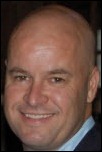
Peter Kuhn, CEO, MEDSEEK
MEDSEEK has always been ahead of the curve, developing strategic patient engagement and management solutions that help healthcare executives realize cost savings by improving care collaboration within existing workflows and find new revenue streams by finding and engaging patients. We were among the first to deploy our enterprise solutions to assist hospitals in finding, engaging, activating, and managing patient populations, and we’ll continue to invest in developing those solutions to allow hospitals to better prepare and position themselves in the rapidly changing world of healthcare reform.
Additionally, the strategic use of predictive analytics will ultimately become the market differentiator for hospitals, which is why we acquired Third Wave Research, Ltd, in 2011 and have been working on integrating their advanced predictive analytics expertise into our existing solutions. We will continue to invest in analytics technology that enables our clients to position for patient engagement, wellness and disease management. The rapid adoption of patient portals and the shift away from fee-for-service in favor of outcome- and quality-based reimbursement models will place more emphasis on finding new cost savings and revenue streams. To differentiate themselves from the competition, hospitals must find ways to personalize the patient experience and better manage the patient population. Effectively promoting profitable services to high-value patients and engaging them in wellness programs will influence healthy behaviors to positively impact outcomes.

Jay Mason, CEO, My Health DIRECT
It has been painfully obvious over the years that our solution was a bit ahead of it’s time. While very successful in directing patients to appropriate care settings in an ER, there wasn’t a pressing need to interact “outside of the walls” broadly or routinely. What we have seen in 2011 and see as our chief role moving forward is to serve as a health scheduling exchange. We will continue to invest our R&D in staying ahead of the curve. Today we can provide true Enterprise Application Integration (EAI) with any willing trading partner via our own platform’s ability to leverage HL7, API, or CRM-based communication protocols.
So the next year will be more of the same for us — creating the integration tools, onboarding methodologies, and consumer engagement services that will allow our clients to redefine the way they interact and guide their patients and members.
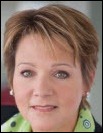
Janet Dillione, Executive Vice President and General Manager, Nuance Healthcare
Going into 2012 the pressure is on for healthcare organizations to increase the quality of care delivered while reducing cost and complying with federal mandates. Nuance could not be better aligned to help healthcare organizations succeed in light of such pressures as Meaningful Use and ICD-10 and to ensure that clinical data is created in the most efficient way possible and is built from rich information that can be analyzed and intelligently used to drive broad healthcare enterprise change and improvement.
Over the next 1-2 years, we’ll continue to invest in areas that fundamentally improve the capture phase of clinical documentation, by which I mean empowering clinicians to document anytime, anywhere on any device in the most effective, natural way possible – via voice. In 2011 we went to the cloud, offering SpeechAnywhere services to development teams across the industry. Speech-powered clinical documentation is widely in demand and will continue to expand to encompass the complete healthcare enterprise and the mobile clinician workflow.
We’ll also continue to heavily invest and innovate in the area of language understanding and analytics technologies, which make it so clinical data can be extracted from unstructured documents and intelligently leveraged to drive better clinical and business decisions. Through work with 3M, IBM and UPMC, Nuance is making tremendous traction against its mission to transform patient stories into high-value information. Our speech-driven clinical understanding solutions will increase the quality of documentation, improve efficiency and drive better care – all while putting less burden on clinicians.

Todd Cozzens, CEO, Accountable Care Solutions, Optum
I heard someone say the other day that ACO = HMO 2.0 But With Data. It is indeed all about the data. I empathize with health system CEOs who, after spending anywhere from $100 million (average medium size IDN) up to the $3 billion Kaiser spent on installing EMRs in the last ten years that all they really achieved was computerizing paper records. Little has been achieved in actually doing something with the data. That’s what the next ten years is all about.
- Population Analytics: EMRs and the early data warehouses being developed on top of them are good at managing a census – sick people that visit hospitals and doctors. Population Analytics manage entire patient populations across all of their interactions with the health system. EMRs rely mostly on clinical data and some financial data. Population Analytics incorporate claims data, clinical data, financial data and actuarial data across ambulatory, in-patient, post acute and home care. We are in the top of the first inning of the biggest wave of change in our healthcare system any of us will see in our lifetime. These tools are also in their 1.0 versions and will evolve. Optum was almost purpose-built to bring all of these capabilities together into one cloud-based, integrated solution.
- End-to-End (E2E) Financial Efficiencies: Hospitals leak revenue more than any other business in any other industry – with the average health system collecting only 33% of what they actually bill under the current fee-for-service (FFS) system. And on top of this we’re now going to burden hospital finance departments by introducing new fee-for-value (FFV) payments starting with bundled payments and pay-for-performance measures right on up to full risk-bearing entities. In the forward-thinking health systems, we’re seeing the realization that they cannot do this all themselves. Many see FFV as the future so they want their current finance teams to be the experts in the new system. These same health systems are increasingly outsourcing their FFS financial systems to experts who know how to recover lost revenue, realize much higher collection rates and know how to drive cost takeout. We acquired Executive Health Resources to help hospitals drive revenue integrity for the big potential loss area of reimbursable admissions. The Lynx ED coding tool returns an average of $2.5 million lost revenue per medium size hospital. We combined those tools plus others around collections, billing, and Financial Health Record (FHR) to form our E2E solution set and we will invest more in these capabilities in 2012.
- ICD-10: Health systems are so encumbered with Meaningful Use compliance, RAC compliance, and facing the coming huge cuts in Medicare/Medicaid that they have largely been in denial about the impending ICD-10 deadline. With the introduction of up to 155,000 new reimbursement codes and less than 10% of healthcare providers halfway to ICD-10 readiness, ICD-10 could be an insurmountable challenge. We made a large investment in what we believe to be the best technology available to meet this new challenge. Because of the time caregivers will spend hunting for the right code, ICD-10 will actually make the health system much less efficient unless groundbreaking new technologies emerge. The natural language processing technology that we acquired from A-Life is exactly what’s needed to automate this laborious process. We’ve seen tremendous traction for this solution in the last six months and expect that to continue. Our R&D investment has increased so we believe we will keep and extend our technology lead here.

Paul Brient, President and CEO, PatientKeeper Inc.
PatientKeeper’s number one priority is to deliver healthcare applications that improve the physician workflow. This means that we save physicians time, we help them provide higher quality care, and we help them get paid for more of the services they deliver.
We are still spending heavily in R&D to round out our suite of 13 fully integrated applications. Our near-term focus is to continue to add features to our CPOE product, complete our Medication Reconciliation product, release a next-generation charge capture application, and give our tablet/iPad applications feature parity with our desktop applications. The emergence of the tablet as a “first class” device has been eagerly anticipated by the healthcare IT community for nearly a decade and is finally here. In fact, we have a small but growing number of our 40,000 users who use their tablet/iPad as their only computing device.

Todd Johnson, President, Salar
While we have always been focused on "the physicians experience," the merger between Transcend Services and Salar has intensified this focus. In the months ahead, we are going to be able to address a physician’s workflow in ways never before thought possible. Understanding all of the external pressures applied to physicians, how remarkable it will be to offer solutions that offer either zero impact on their day-to-day, or better yet, offer drastic improvements to their workflow that they didn’t even realize were achievable? Not only will we be able to satisfy a physician’s interests for time, speed, and efficiency, but we will also be able to free the physicians from those same external pressures. By offering to our hospital customers clinical documentation solutions that meet the needs of coding, compliance, quality, billing, RAC audit mitigation, communication, and patient safety while doing so in a zero impact methodology to the delivery of care, we truly meet the needs of all parties at the table.
To realize the benefits of this "enhanced physician experience," we will be investing heavily in our web-based platform to complement our existing thick client solutions, natural language processing tools, front end speech solutions, ICD-9 and ICD 10 GEMS mapping solutions, front end computer-assisted coding features, and even an improved workflow for traditional transcription services. We will continue to deliver all of the above through our "have it your way approach," thereby meeting the needs of both our physician users and our hospital customers.
It’s been a long-time objective of Salar to become the de facto clinical documentation module within a host of HIS systems. We are closer to realizing that objective than ever before. Through some new and unique customer engagements, we will be integrating our platform into industry-standard information systems and, in turn, reaching out to an even broader customer base. The marriage of these solutions and the seamless nature of their delivery are incredibly important to us. Our customers count clicks–and so do we. We will continue to work over the next 1 to 2 years to streamline usability across systems and, ultimately, enhance a physician’s day-to-day experience.

Stephen Hau, CEO, Shareable Ink
Everyone wants innovation, but no one wants to change.
It is well understood that the healthcare industry must become more electronic and data-driven. However, we also know that change is hard. Market data reveal that, while most clinicians enjoy the accessibility of patient information that EHRs deliver, the majority does not prefer the Windows 95-style “point and click and drop down list” style of documenting that the standard EHR user interface requires.
We believe that there must be a better way to extract information from a physician’s head without forcing them to become typists, tap a screen or mouse 30 times to create a “cookie cutter” note, or hire prohibitively expensive scribes out of desperation.
As such, we have begun to invest aggressively in machine learning and natural language processing. Our system does not require user training. Instead, it has begun to learn from clinicians’ handwriting, gestures, and other natural inputs. The ambitious goal is to deliver innovation without requiring clinicians to alter time-tested workflows.

Ed Daihl, CEO, Surgical Information Systems
Our R&D focus supports improving the management of perioperative services, the area of the hospital that continues to drive the financial success of the hospital. A recent survey by SIS shows an increased focus on reducing perioperative costs, with 78% working on cost reduction efforts – a 34% increase since 2010. Additionally, the survey indicated another shift from 2010 with cost reduction efforts being prioritized over reimbursement concerns. In 2010, 25% of hospitals cited maximizing reimbursements as their top financial concern. In 2011, that number dropped by 56%. We believe that perioperative specific analytics is a powerful tool to help hospitals control costs — their top concern — and will continue to work to improve this management tool.
Additionally, we see the adoption of anesthesia information management systems as a growth area in the industry. Electronic anesthesia documentation streamlines this process and provides accurate and legible anesthesia records. This equates to significant benefits, such as more accurate charge capture, quality improvement, and allows for the anesthesiologist to spend more time with the patient and less time documenting. The addition of clinical intelligence with anesthesia analytics provides even more value to hospitals and anesthesia providers by unlocking powerful decision making data to help improve both care quality and financial return.

Evan Steele, CEO, SRS
Over the next couple of years, SRSsoft will evolve to accommodate the acquisition and sharing of increasingly greater volumes of patient health information, as relevant to our specialist and primary care clients.
We will remain focused on productivity (naturally!) as we evolve our data capture interfaces. This means that user interfaces will be implemented using techniques that are both ergonomic from a personal user perspective and accommodative of the actual workflow that takes place in the clinical office environment.
We have put into place, and will continue to enhance, our own dedicated platform for data sharing and interoperability. Our Continuity of Care Exchange (CCX) platform manages connectivity and the physical transport of files, while our Discrete Data Exchange (DDX) components handle the import and export of discrete data to and from our system. We will continue to evolve CCX and DDX over the next couple of years to support increasingly higher levels of interoperability.

Rick Stockell, President, Stockell Healthcare Systems
Over the next 1-2 years, Stockell Healthcare Systems will be devoting a significant amount of R&D to ongoing regulatory compliance. In addition, we will continue our ongoing focus on client business process improvement through the development of advanced analytics and information management solutions.

Richard Atkin, President and CEO, Sunquest
Sunquest is increasing its investment in product development across the board. We now have over 35% of our total resources dedicated to product development and product quality. We will have a particular focus over the next 24 months on developing new functionality in the converging areas of molecular pathology, anatomic pathology, and digital pathology. As a founding Gold Sponsor of the Digital Pathology Association (DPS) and through our partnership with Massachusetts General Hospital, we will be building the next generation of pathology workflow solutions.
The incorporation of digital images of all sorts into the pathology workflow will drive significant growth, change, and efficiencies throughout our clients’ operations. Sunquest will work closely with our clients to enable them to take advantage of the coming changes in science, medicine, and technology. The ongoing evolution of molecular testing is driving a convergence between anatomic and clinical pathology. As healthcare delivery evolves to a more integrated, regional model and incorporates more personalized data, Sunquest will provide the solutions required to thrive in a new age.

Sunny Sanyal, CEO, T-System
To meet clients’ current and evolving needs, T-System in the next 12-24 months will focus R&D investment on enhancing our emergency department information system, The T SystemEV. Our top three R&D priorities are as follows:
- Support for regulatory mandates, including Meaningful Use and ICD-10. T-System will seek ONC-ATCB certification for Stage 2 Meaningful Use measures as soon as HHS finalizes the requirements. T SystemEV, already certified for 2011/2012 criteria for Stage 1 Meaningful Use requirements, will be compliant with ICD-10 in 2012, a year before the deadline. Our goal is to give clients maximum flexibility to address clinical, business and regulatory needs
- Enhance interoperability. T-System will continue to invest and partner with other vendors to ensure that clients can seamlessly connect T SystemEV with disparate inpatient EHRs and other information systems outside the ED.
- Continue to provide innovative and new functionality. As the care transition hub and starting point for a high volume of patient handoffs, the ED plays a critical role in ensuring the continuity of care. Supporting smooth patient transitions with efficient communication will become even more important as facilities and practices form accountable care organizations (ACOs). T-System will develop solutions and functionality that will help EDs lead the ACO model of healthcare delivery. Additional offerings will continue to improve clinical and financial outcomes that start in the ED and benefit the entire hospital and community.
Comments Off on HIT Vendor Executives – Part Two of Two 12/30/11




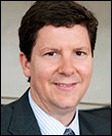



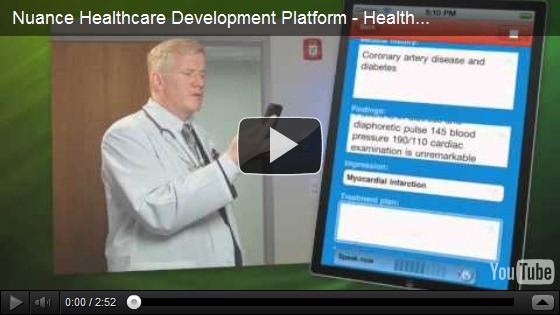
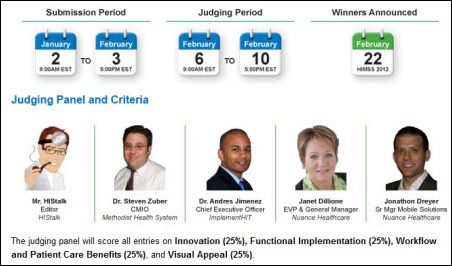




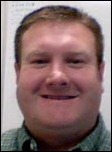



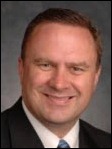

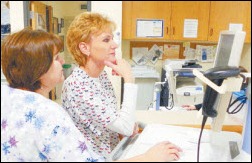

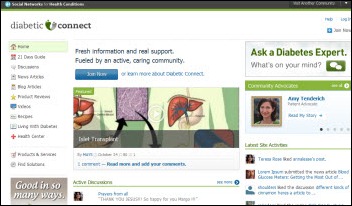







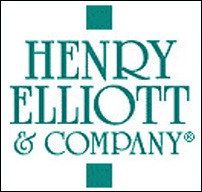









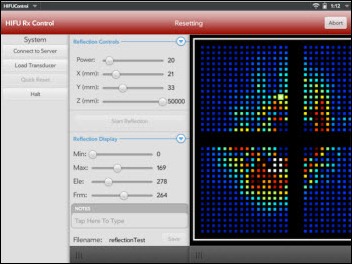



































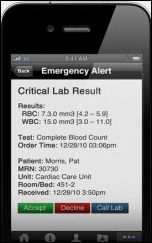


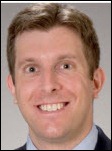







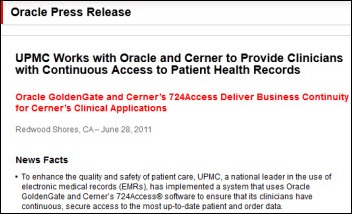

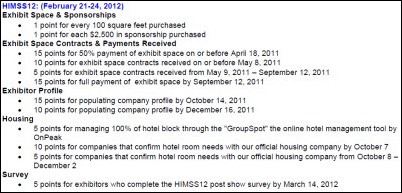



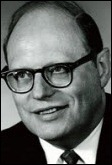
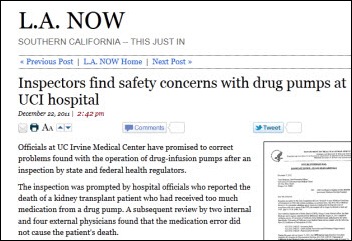

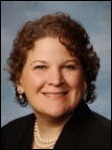
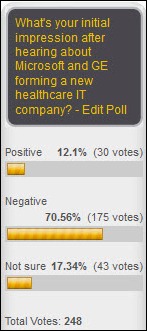
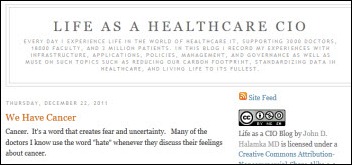



"...says Epic that is trying.." should read "....says that Epic is trying..."